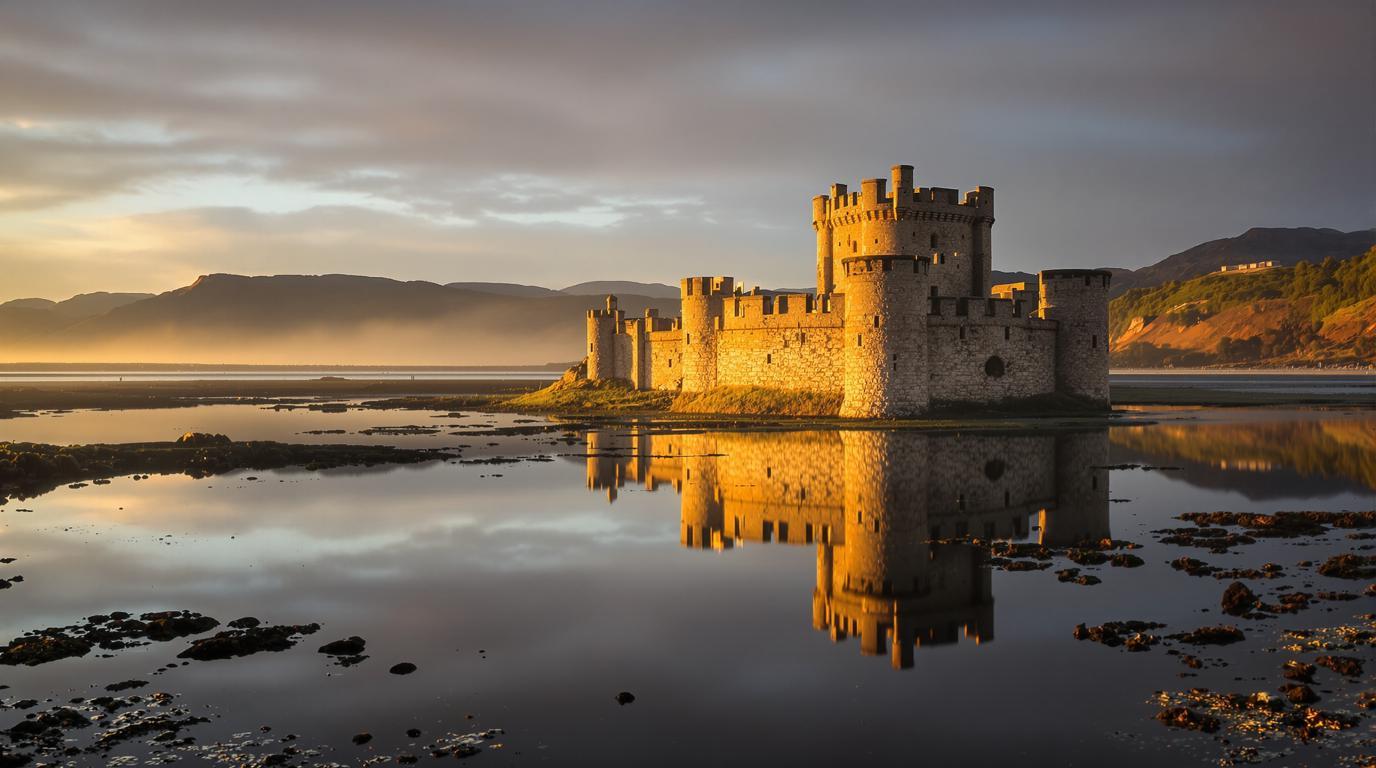Wales hides one of its most compelling treasures just off its northern coast. Anglesey, an island steeped in Celtic mythology and medieval grandeur, offers travelers an enchanting escape where time seems to slow down. This 276-square-mile haven combines dramatic coastal scenery with historical depth that few destinations can match.
A crown jewel of medieval architecture
Beaumaris Castle stands as perhaps the finest example of 13th-century military architecture in Britain. Built by Edward I but never completed, this UNESCO World Heritage site features a perfect concentric design with symmetrical walls and a water-filled moat that still impresses engineers today.
“Beaumaris represents the pinnacle of Edwardian castle building in Wales,” explains Dr. Jane Roberts, medieval historian. “Its innovative defensive systems were centuries ahead of their time, despite never being fully realized.”
Villages frozen in maritime time
Along Anglesey’s ragged coastline, whitewashed fishing villages appear like pearls on a necklace. Moelfre, with its lifeboat heritage and maritime tales, offers visitors a glimpse into an authentic Welsh coastal community where fishing boats still bob in the harbor and locals gather at centuries-old pubs.
In Beaumaris, colorful Georgian facades line streets that lead to a picturesque pier. Here, crab fishing remains a beloved pastime for visitors, much as it has for generations.
The island of druids and ancient spirits
Before castles dominated the landscape, Anglesey served as the final stronghold of the druids against Roman invasion. Sacred groves and stone circles hint at the island’s mystical past, similar to the Celtic mysteries found on the Isle of Man.
“The spiritual energy here is palpable,” shares Megan Williams, local heritage guide. “Visitors often tell me they feel a connection to something ancient when walking our coastal paths – something that predates written history.”
A coastal path to remember
The 125-mile Anglesey Coastal Path offers hikers breathtaking vistas at every turn. Unlike the crowded trails in popular national parks, here you’ll often find yourself alone with the crash of waves and cry of seabirds as your only companions.
Dramatic cliff formations give way to secluded coves and pristine beaches. The section near South Stack lighthouse provides panoramic views across to Snowdonia’s mountains – a vista that rivals the stunning coastal landscapes of Tasmania.
Hidden gems beyond the guidebooks
St Cwyfan’s Church stands on a tiny island accessible only at low tide. This 12th-century structure, known locally as the “Church in the Sea,” creates a hauntingly beautiful silhouette against the setting sun.
For those seeking tranquility much like the secluded French mountain retreats, Llanddwyn Island offers pristine beaches and the romantic ruins of St Dwynwen’s Church, dedicated to the Welsh patron saint of lovers.
Unexpected culinary delights
Anglesey’s food scene surprises many visitors expecting simple fare. The island’s sea salt (Halen Môn) is prized by chefs worldwide, while seaside restaurants serve lobster and crab caught hours earlier.
Traditional Welsh cakes and bara brith (speckled bread) can be found in village tearooms, offering a taste of local culture reminiscent of the authentic culinary experiences in hidden French villages.
Where to stay for unforgettable views
Accommodations range from historic inns to coastal cottages. For a truly unique experience, consider lighthouse keeper’s cottages near Point Lynas where panoramic sea views rival those of Turkey’s famous cave hotels – though here, dramatic storms replace hot air balloons.
Anglesey captures a rare magic – where ancient history, breathtaking landscapes, and authentic Welsh culture converge. It’s a place where castle walls tell centuries-old stories, coastal paths lead to soul-stirring vistas, and village pubs welcome visitors like old friends returning home.
